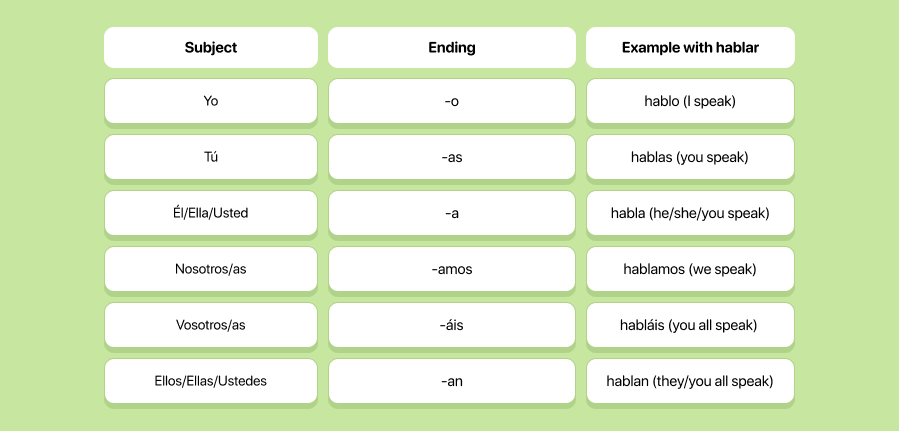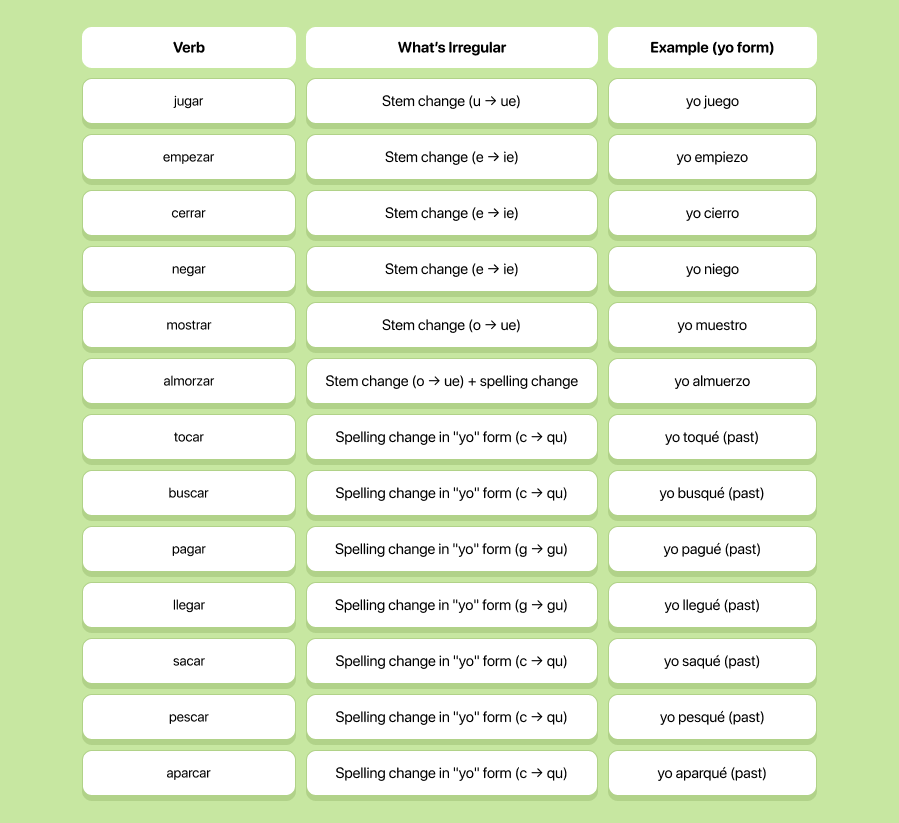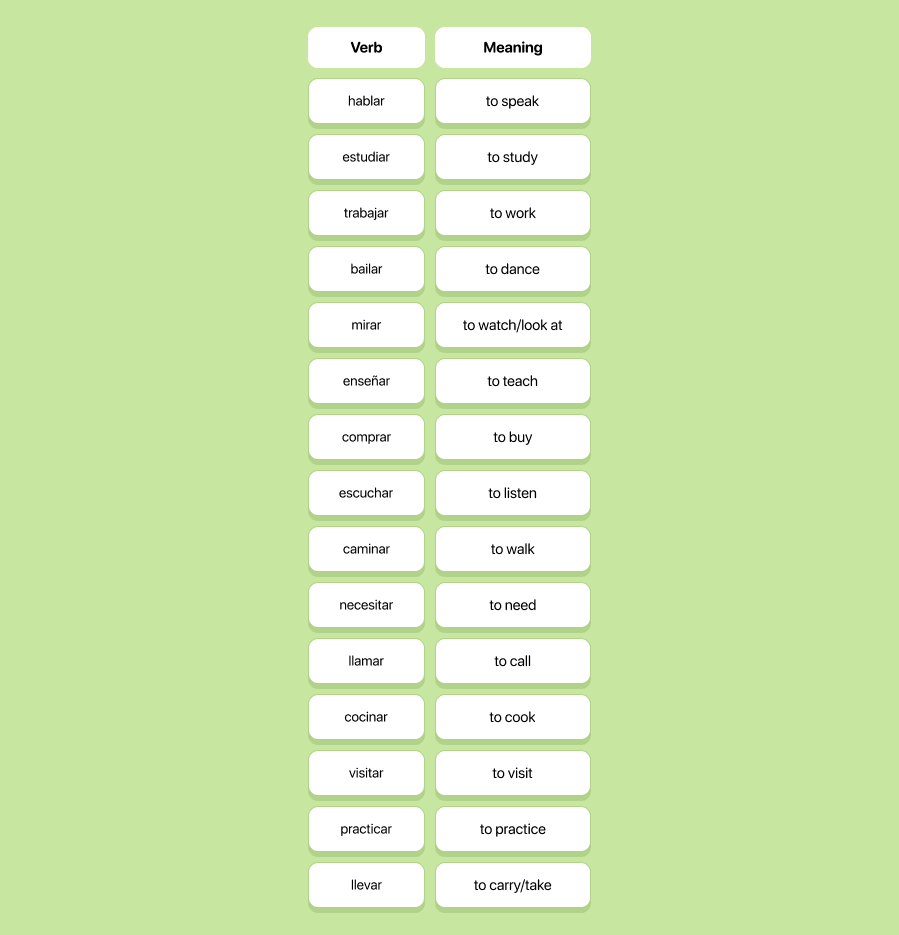If you're learning Spanish, here's some good news: most verbs follow simple and predictable rules. Even better? -AR verbs are the easiest ones to start with. From hablar (to speak) to trabajar (to work), mastering -AR verbs in Spanish gives you instant access to hundreds of useful expressions.
In this guide, you’ll learn what they are, how to conjugate them, and how to use them in real-life situations — all with plenty of examples and a handy list to keep nearby.
What Are -AR Verbs in Spanish?
In Spanish, all infinitive verbs end in -ar, -er, or -ir. The infinitive is the unconjugated form, like “to speak” or “to dance.” So when we talk about -AR verbs in Spanish, we're simply referring to verbs that end in -ar — such as:
- hablar – to speak
- bailar – to dance
- estudiar – to study
- caminar – to walk
These verbs are the largest group in the Spanish language. Learning their patterns helps you build a strong foundation in communication.
The Basics of -AR verbs Conjugation
Let’s start with the present tense, since it’s the most commonly used. To conjugate regular -AR verbs in Spanish, remove the -ar ending and add the appropriate ending for each subject pronoun:

This pattern is the foundation of -AR conjugation. Once you learn it, you can apply it to dozens of other verbs.
Practical Examples Using -AR Verbs
To really understand -AR verbs conjugation, you need to see them in context. Here are examples using common -AR verbs in Spanish:
- Estudiar Yo estudio español todos los días. (I study Spanish every day.)
- Trabajar Nosotros trabajamos en una oficina. (We work in an office.)
- Cantar Ella canta muy bien. (She sings very well.)
- Bailar ¿Tú bailas salsa? (Do you dance salsa?)
- Caminar Ellos caminan por el parque todas las tardes. (They walk through the park every afternoon.)
- Llamar Yo llamo a mi mamá cada noche. (I call my mom every night.)
Irregular vs. Regular -AR Verbs
Great news: most Spanish -AR verbs are regular. That means they follow the exact pattern you learned earlier. But — as with almost everything in language — there are some exceptions.
Irregular -AR verbs don’t follow the normal conjugation pattern in all forms. Some only change in one form (usually "yo"), while others have spelling or stem changes in multiple forms.
Common Irregular -AR Verbs

💡 Note: Some of these verbs are only irregular in the preterite (past) tense, while others have stem changes in the present tense.
Tip to Remember:
Even irregular -AR verbs follow patterns — they’re just a little trickier. Learn them in context, and don’t try to memorize all at once. Start with the most common ones (jugar, empezar, tocar) and expand as you go.
A Handy List of -AR Verbs in Spanish
Here’s a list of -AR verbs in Spanish that are useful and easy to learn. Try picking five and making your own sentences with each.

These are some of the most common -AR verbs in Spanish, and you’ll hear them everywhere — from everyday conversations to movies and music.
Tips for Practicing -AR Verbs
Ready to make them stick? Here are a few helpful ways to master -AR verbs faster:
- Create mini-dialogues using different subjects.
- Label actions around you using -AR verbs: “caminar,” “mirar,” “escuchar.”
- Use flashcards with the infinitive on one side and conjugations on the other.
- Practice speaking: Even if it’s just to yourself, say full sentences out loud.
- Write a daily journal entry with -AR verbs like trabajo, estudio, cocino.
The more you use them, the easier they get.
Learning Spanish can feel like a mountain at first, but -AR verbs are like the solid hiking boots you need to climb it. They’re consistent, useful, and appear in almost every conversation. Once you understand -AR verbs conjugation, your confidence in Spanish will take off.
So grab that list of -AR verbs in Spanish, practice every day, and soon you’ll be forming sentences like a natural.
¿Listo? ¡A practicar! And if you want to learn more about the Spanish language, here is an article that will both entertain and teach you a few useful words.
FAQ
1. What’s the best way to memorize -AR verb endings?
Start with a chant or rhythm. Many learners repeat the endings like a song: -o, -as, -a, -amos, -áis, -an. Then pick 3 regular verbs like hablar, estudiar, and trabajar, and write them out in full for each pronoun. Repetition and speaking out loud help lock it in.
2. Are there many irregular -AR verbs in Spanish?
Not many — that’s why -AR verbs are a great place to start. Most -AR verbs are regular. The few irregular ones either have small spelling changes (yo toqué) or a stem vowel change (yo empiezo). Focus on the regular ones first, then learn the irregulars as you come across them.
3. Do I need to learn all the subject pronouns to conjugate verbs?
Yes — at least the basics. Knowing who is doing the action (yo, tú, él, etc.) helps you choose the correct verb ending. But with practice, you’ll start recognizing patterns and using them automatically. Think of them as your “clues” to unlock the right form.


















